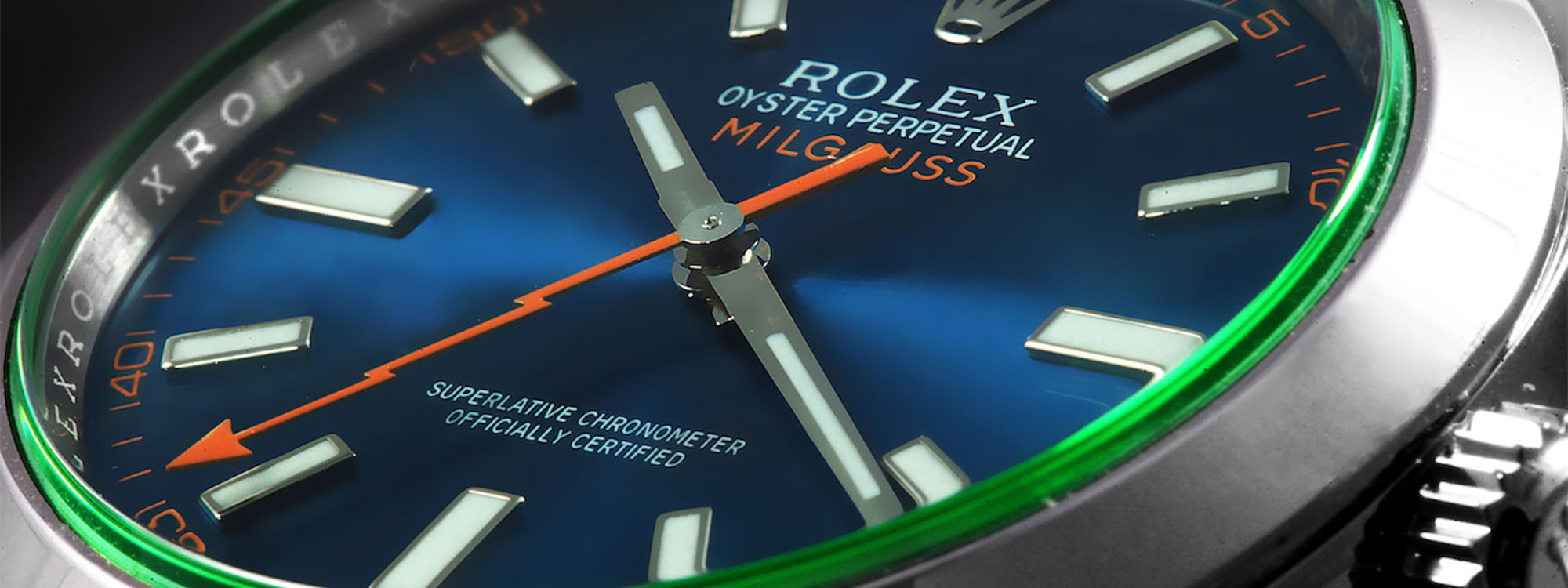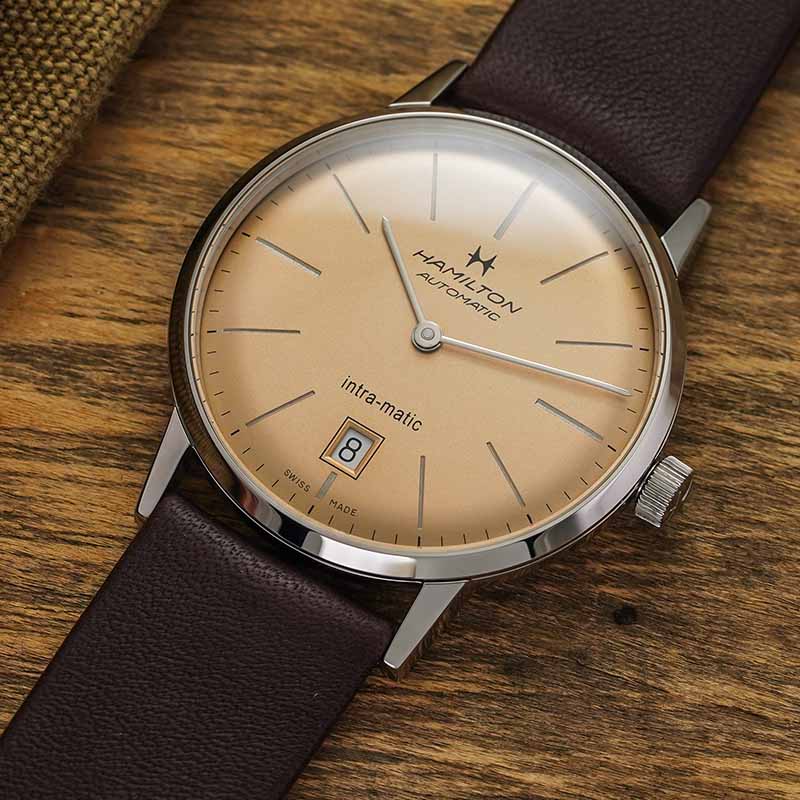Rolex, as always, made news at Watches & Wonders Geneva back in April with many of the new watches it will be releasing this year (we covered many of them here), but the Swiss luxury brand generated nearly as much buzz with an announcement about a watch that it won’t be making anymore. Back in March, Rolex announced that the Milgauss, a model it had been making continuously since 2007, with roots that go back even further, would cease production this year. The news was not necessarily a shock to everyone — the Milgauss was not on a par with Rolex’s most popular models, waiting-list mainstays like the Daytona, Submariner, and GMT-Master — but it was a disappointing splash of reality to the subgroup of Rolexistas who love the cult-classic antimagnetic watch, while also serving as a call to attention for watch-market speculators who rarely find a Rolex shortage that they aren’t eager to monetize. What makes the Milgauss such a niche favorite in the Rolex portfolio? Read on.

Rolex founder Hans Wisdorf (above) could be described as many things: a visionary entrepreneur, a brilliant marketer, a founding father of the modern watch industry. But at his true core, Wilsdorf was essentially a problem solver. Just about every contribution that he and his company made to horological history sprang from a dedication to fixing or eliminating some issue that plagued watch wearers. Too tedious to wind your watch every day? Here’s the Perpetual movement (below). Your watch isn’t waterproof enough to wear while swimming? Behold the Oyster case. The date on the dial is too small to read? Allow me to introduce you to the Cyclops lens. And so on it goes.

Watch movements, composed of dozens or hundreds of metal parts, had always been susceptible to the ill effects of magnetic fields. In the early 1950s, our exposure to those magnetic fields was increasing, especially for those employed as scientists, engineers and technicians, who faced the frustration of their wristwatches becoming magnetized, and thus inaccurate, on a regular basis while they were working.

Rolex was no stranger to developing purpose-built tool watches that were tailored to the needs of certain professions. In 1954, the company had released both the Submariner, built for underwater use by professional divers, and the GMT-Master, designed to be worn in cockpits by commercial airline pilots. Two years later, in 1956, it was ready to tackle the challenge of building its first wristwatch robust enough to withstand the ambient magnetic onslaught of the mid-20th Century — the Rolex Milgauss, which derives its unusual name from a contraction of the phrase “mille gauss” — mille being “1,000” in French, gauss being the international unit of measure for magnetic field strength, named for German physicist Carl Gauss. The name signified the watch’s top selling point: its unusually robust level of magnetic resistance.

Rolex was not the first watchmaker to address the vexing problem of magnetism. As early as 1915, Vacheron Constantin had produced the first pocket watch with a magnetic-resistant movement. In 1930, Tissot released the timepiece widely regarded as the first antimagnetic wristwatch, the aptly named Tissot Antimagnetique. Both watches used an alloy of palladium, a paramagnetic metal, for their hairsprings. During World War II, the requirements of military pilots in highly magnetized cockpits prompted companies like IWC to place the movements of their pilot watches (as above) inside protective cages made of soft iron — called Faraday cages, after Michael Faraday, the scientist who invented them in 1846 — to shield the movement from magnetic interference. IWC used a similar structure inside its Ingenieur Ref. 1832, which debuted in 1955, one year before the Rolex Milgauss, and as its French moniker implied, was marketed as a watch for engineers.

Rolex’s first Milgauss, Ref. 6451, resembled its diving predecessor, the Submariner, in many respects, with its Oyster case and rotating bezel, but also differed in some significant details, like its honeycomb-pattern dial, dot and arrow hour markers, and the now iconic lightning-bolt-shaped central seconds hand. Inside its 38mm steel case, and enveloped in a ferromagnetic Faraday cage, was the 25-jewel automatic 1065/66 movement. As its name promised, this structure ensured that the movement would perform reliably even under 1,000 gauss of electromagnetic pressure. How a Faraday cage works, essentially, is that because it is made from a mesh of conductive material, external electromagnetic fields are redistributed throughout its exterior rather than penetrating to its interior. Appropriately, the Rolex Milgauss became popular among scientists of the era, including those working at Switzerland’s European Organization for Nuclear Research (CERN, pictured below), which had worked with Rolex to develop the watch.

Both the Milgauss and its predecessor by one year, the IWC Ingenieur, claimed a 1,000 gauss magnetic resistance (the ISO standard for a watch to be called “antimagnetic,” incidentally, is a magnetic resistance to 4,800 A/m, or about 60 gauss). The reasons for the Milgauss’ more enduring popularity, despite its recent discontinuation, can probably be attributed to Rolex never straying too far from the original’s design; the Ingenieur, by contrast, has undergone many modifications over its history, including the most recent version in 2023.

The only major update to the Milgauss, in fact, came just a few years after its debut, in 1960. The Ref. 1019 Milgauss (above) was a more streamlined version of its predecessor, more in the style of an Oyster Perpetual than a Submariner. A smooth stationary bezel replaced the bidirectional rotating one on the earlier references; thinner, more elegant bar-shaped indexes took the place of the previous shaped ones; and the hour and minute hands were now flat at their tapered ends rather than sharply pointed. The lightning bolt seconds hand, the original model’s most visually defining hallmark, was also jettisoned in favor of a more conventional arrow-tipped baton. While the Ref. 1019 never became one of Rolex’s biggest hits, it remained in production, albeit in limited numbers compared to the brand’s more popular models, for a respectable quarter-century-plus before being finally discontinued in 1988.

In 2007, the Milgauss returned, and much to the delight of purists, so did the playful lightning-bolt seconds hand, now even more distinctively executed in a bright orange coloring. The timing, Rolex must have figured, was ideal: in the ultra-high-tech modern era, we are more surrounded by magnetic fields than ever before, bombarded by everything from microwave ovens to cell phones to halogen lamps to clock radios. The 21st-century version of Rolex’s Atomic Age timepiece, Ref. 116400, combined aspects from both the original 1953 model and the well-established 1960 version. It also incorporated the same array of patented technologies and materials that enhanced the contemporary versions of enduring icons like the Submariner and Daytona.

The 40mm case was made of 904L stainless steel, a surgical-grade alloy that Rolex has long referred to as “OysterSteel,” with a smooth, polished stationary bezel. The dial, offered in white or black, both with orange accents to echo the retro-futuristic “electric” seconds hand, had thicker flat-tapered hands and hour markers than the discontinued Ref. 1019. The modern movement, Caliber 3131, resisted magnetism even more than its predecessor, not only guarded by a ferromagnetic inner case but also equipped with components made from antimagnetic materials, like the patented blue Parachrom hairspring and nickel-phosphorus-alloy escape wheel. Also worth noting: the lack of a date window on the dial was not a decision made solely for aesthetics. It’s one less opening in the watch that could allow magnetic fields to seep into the interior and affect the cage around the movement. The necessary openings for the crown’s stem, the hands' axles, and the dial’s anchoring screws, were kept as small as possible, and the solid screwed caseback helps cover the ferromagnetic inner case.

The most recent iteration of the Milgauss wasn’t actually all that recent, launching in 2014; the snail-like pace of new models may have been an early indicator that the watch, despite its recent cult-classic status, was still only being produced in limited quantities for a devoted niche audience. The so-called “Z-Blue” version of the Milgauss (above, photo via Analog/Shift) leaned into the model’s history in an avant-garde fashion, underscoring the orange details with an eye-catching electric blue dial. Like the Anniversary “Glace Vert” version of the black-dial model from 2007, it also had a blue-green-tinted sapphire crystal that bathed the dial in a ghostly pseudo-electronic glow. The model, containing the automatic, COSC-certified Rolex Caliber 3131, was one of only two Milgauss watches remaining in production leading up to the halt in production (the other was the aforementioned black-dial/green-tinted crystal version). The Milgauss, at the moment, is totally absent from Rolex’s website, although pre-owned models can, of course, be discovered on other retail sites — often priced far beyond what a new model would theoretically cost. Remember, however, that Rolex has consigned the Milgauss to horological limbo once before and it re-emerged for a high-profile second act. Perhaps lightning (if you’ll pardon the pun) may yet strike a third time?




























































0 Comments